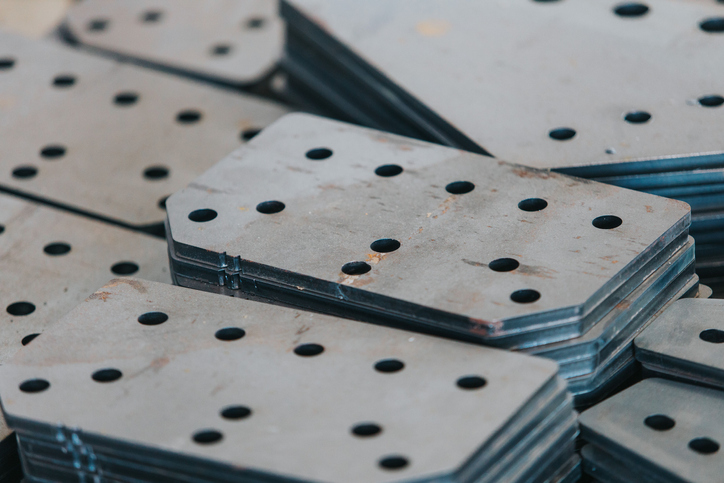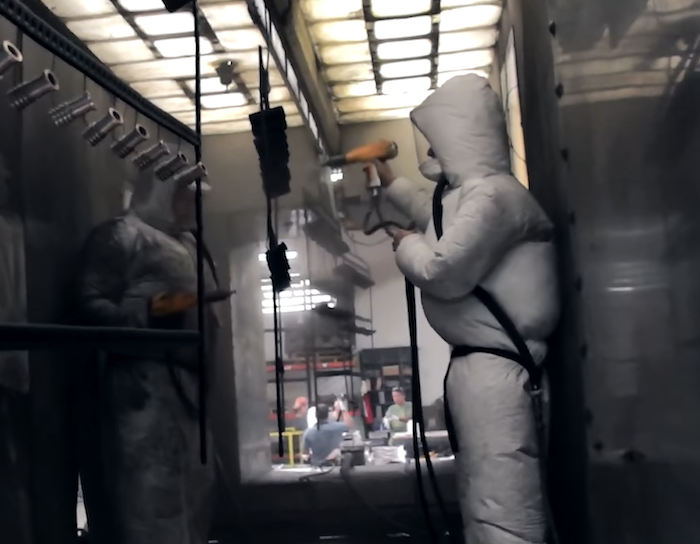Staking is a critical process in manufacturing, especially in the production of layered components or assemblies. This article reviews what staking in manufacturing is, its common types, as well as compares staking to alternative assembly methods.
What is Staking
Staking is an assembly process involving deforming a portion of one component to mechanically interlock it with another. Thus, creating a secure and permanent joint. It is common in applications where other assembly methods such as welding, riveting, or adhesive bonding might not be suitable. For example, factors like material compatibility, required strength, or environmental conditions could hinder the use of certain assembly methods. As a result, staking is key in delivering efficient and cost-effective assembly in manufacturing industries such as automotive, electronics, and consumer goods. Staking is particularly valuable in situations where space limitations or additional fasteners could complicate the design and increase costs.
Types of Staking in Manufacturing
There are several methods of staking in manufacturing, each with its advantages and limitations. The following sections highlight the most common types.
Cold Staking
Cold staking, or mechanical staking, involves deforming a material at room temperature. In this method, a staking tool or machine applies a force to a component causing a localized deformation that locks the part in place. This type of staking is common in the electronics and automotive industries, where precision and minimal thermal impact are essential.
Hot Staking
Hot staking involves heating the material before deformation. Generally, this method is for plastics and involves heating the staking tool or the component itself. The heat softens the material, therefore making it easier to deform and creating a strong bond once cooled.
Ultrasonic Staking
Ultrasonic staking uses high-frequency ultrasonic vibrations to soften the material at the point of staking. The ultrasonic vibrations create localized heating due to friction, which melts or softens the material just enough to create a secure joint. Similar to hot staking, this method is utilized with plastics and is predominant where precision and cleanliness are essential.
Laser Staking
Laser staking involves using a laser beam to heat and soften a specific area of the material. The laser’s precision allows for very controlled staking, thus, making it ideal for components requiring high accuracy. This method is used in various industries, including electronics and medical devices.
Staking vs Other Assembly Methods
When choosing an assembly method, it is important to consider factors like material compatibility, strength requirements, and environmental conditions. Below, we compare staking with other common assembly methods: crimping, swaging, and clinching.
Staking vs Crimping
| Feature | Staking | Crimping |
| Process | Deforms a part of one component to secure it to another, creating a permanent joint. | Compresses a connector around a wire or terminal to establish an electrical connection. |
| Strength of Joint | Creates strong, durable, and permanent joints that can withstand significant mechanical stress. | Provides reliable electrical connections but may be less robust mechanically. |
| Material Compatibility | Suitable for both metals and plastics. | Typically used for metals and conductive materials. |
| Application | Common in automotive, electronics, and also consumer goods for assembling components. | Serves in electrical connections, cable assemblies, and wire terminations. |
| Advantages | Offers high strength and durability without additional fasteners or adhesives. | Quick and efficient for electrical applications, ensuring low resistance connections. |
| Disadvantages | Requires specialized equipment to achieve precise alignment and control. | Can be less reliable if not performed correctly and may require re-crimping. |

Staking vs Swaging
| Feature | Staking | Swaging |
| Process | Staking deforms a component to create an interference fit and secure the joint. | Swaging compresses, as well as shapes metal to form a tight joint, often by reducing its diameter. |
| Strength of Joint | Provides robust, permanent joints that can endure mechanical stress. | Produces strong and durable joints suitable for high-precision applications. |
| Material Compatibility | Suitable for both metals and plastics. | Typically used for metals, especially ductile materials. |
| Applications | Usually for automotive, electronics, and consumer goods assemblies. | Common in aerospace, manufacturing, and jewelry for joining metals. |
| Advantages | Creates reliable and high-strength joints without additional fasteners or adhesives. | Ensures tight and precise joints, ideal for high-strength requirements. |
| Disadvantages | Requires precise alignment and control, potentially needing specialized equipment. | Can be complex and require skilled operation, with potential for material deformation. |

Staking vs Clinching
| Feature | Staking | Swaging |
| Process | Staking involves deforming a component to mechanically lock it with another part. | Clinching joins two sheets of metal by deforming and interlocking them without additional fasteners. |
| Strength of Joint | Produces strong, permanent joints suitable for high-stress applications. | Provides reliable and strong joints for thin metal sheets. |
| Material Compatibility | Can be used for a variety of materials including metals and plastics. | Primarily for sheet metals. |
| Applications | Wide application in automotive, electronics, and also consumer goods for secure assembly. | Commonly used in sheet metal fabrication, automotive bodies, as well as HVAC systems. |
| Advantages | Ensures high joint integrity without the need for fasteners or adhesives. | Cost-effective and efficient for joining thin metal sheets. |
| Disadvantages | May require specialized equipment for precise control. | Limited to specific applications involving sheet metals and may require surface preparation. |
Advantages of Staking Over Other Assembly Methods in Manufacturing
Staking offers several advantages over other assembly methods, making it the ideal choice for various manufacturing applications
Cost Efficiency
- Minimal Material Costs: Staking eliminates the need for additional fasteners or adhesives, which can lower material costs. Fasteners, such as screws or rivets, not only add to the cost of the materials but also require additional processing and handling.
- Lower Labor Costs: Staking can often be automated, hence, reducing the need for manual labor and associated costs. Automated staking processes can lead to more efficient production lines.
Simplicity and Speed
- Streamlined Assembly: Staking simplifies the assembly process by eliminating the need for multiple components or complex joining mechanisms. Hence, streamlining production workflows and leading to faster assembly times.
- Quick Setup: Can be set up quickly and with minimal adjustments when automated, which is beneficial for high-volume manufacturing.
Precision and Control
- Consistent Quality: Provides a high degree of precision and control over the joining process. Automated staking machines can achieve consistent results, which is crucial for maintaining high quality and also reducing defects.
- Controlled Deformation: The ability to control the depth and extent of deformation allows for precise and reliable joints. This is especially important in applications where accuracy is critical.
Design Flexibility
- Compact Design Options: Staking allows for more compact designs by eliminating the need for external fasteners. This is particularly advantageous in space-constrained applications where traditional fastening methods might be impractical.
- Integration with Complex Parts: Staking can serve to integrate parts with complex geometries or delicate components that might be challenging to join with traditional methods.
Reduced Thermal Impact
- No Heat Damage: Unlike welding, which involves high temperatures and can potentially damage sensitive materials, staking—especially cold staking—does not involve significant heat. This reduces the risk of thermal damage to surrounding components.
Enhanced Durability and Strength
- Strong Mechanical Joints: Staking creates strong mechanical interlocks that can withstand significant stresses and vibrations.
- Resilient to Vibration and Shock: The staking process often results in joints that are resilient to vibration and shock. Therefore, making it ideal for applications in automotive, aerospace, and electronics industries.
Minimal Post-Processing
- Reduced Need for Additional Treatments: Since staking directly creates the mechanical joint, it often requires less post-processing. This means it is a lot quicker in comparison to methods like welding, which might need additional finishing or inspection steps.


